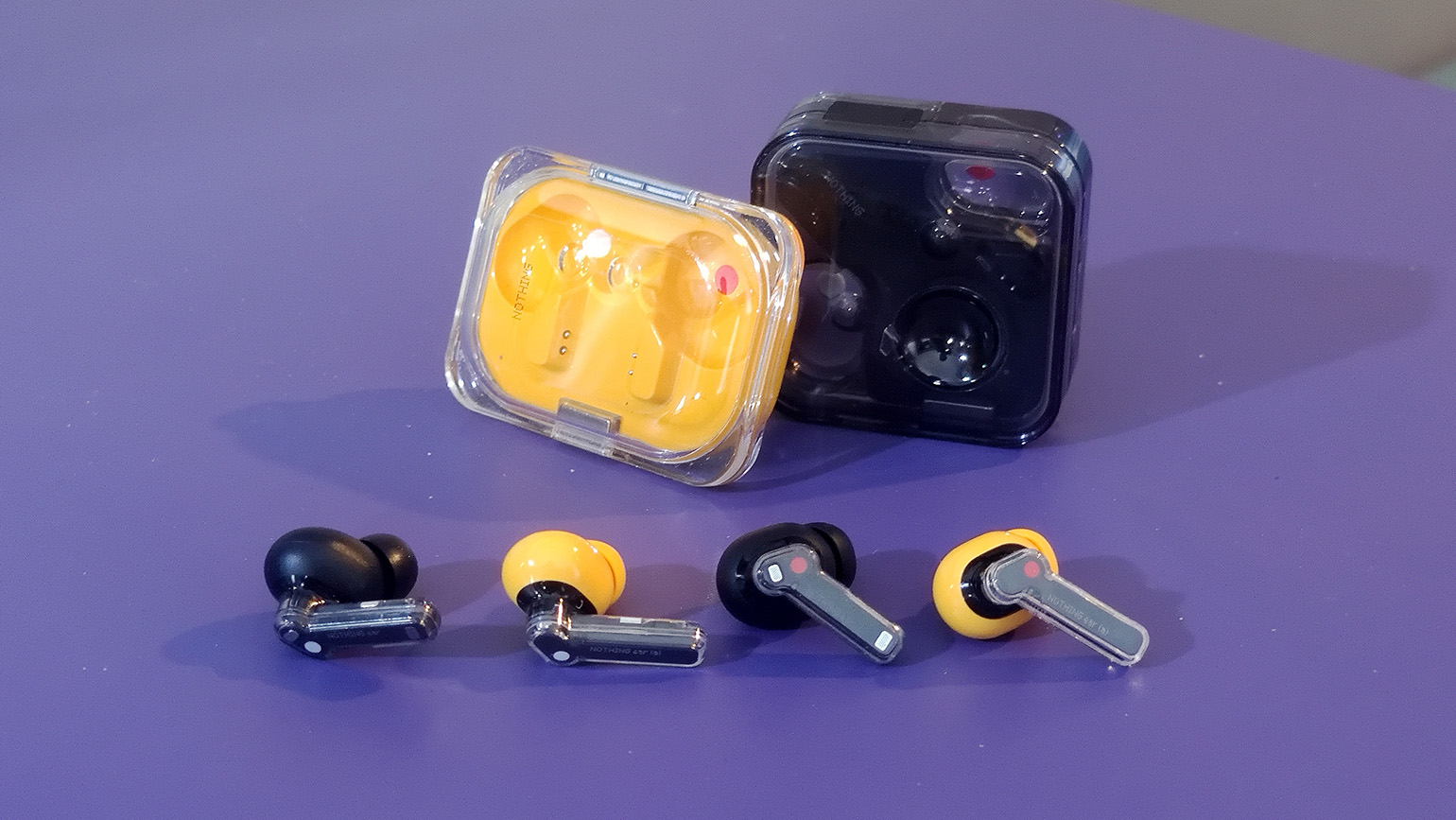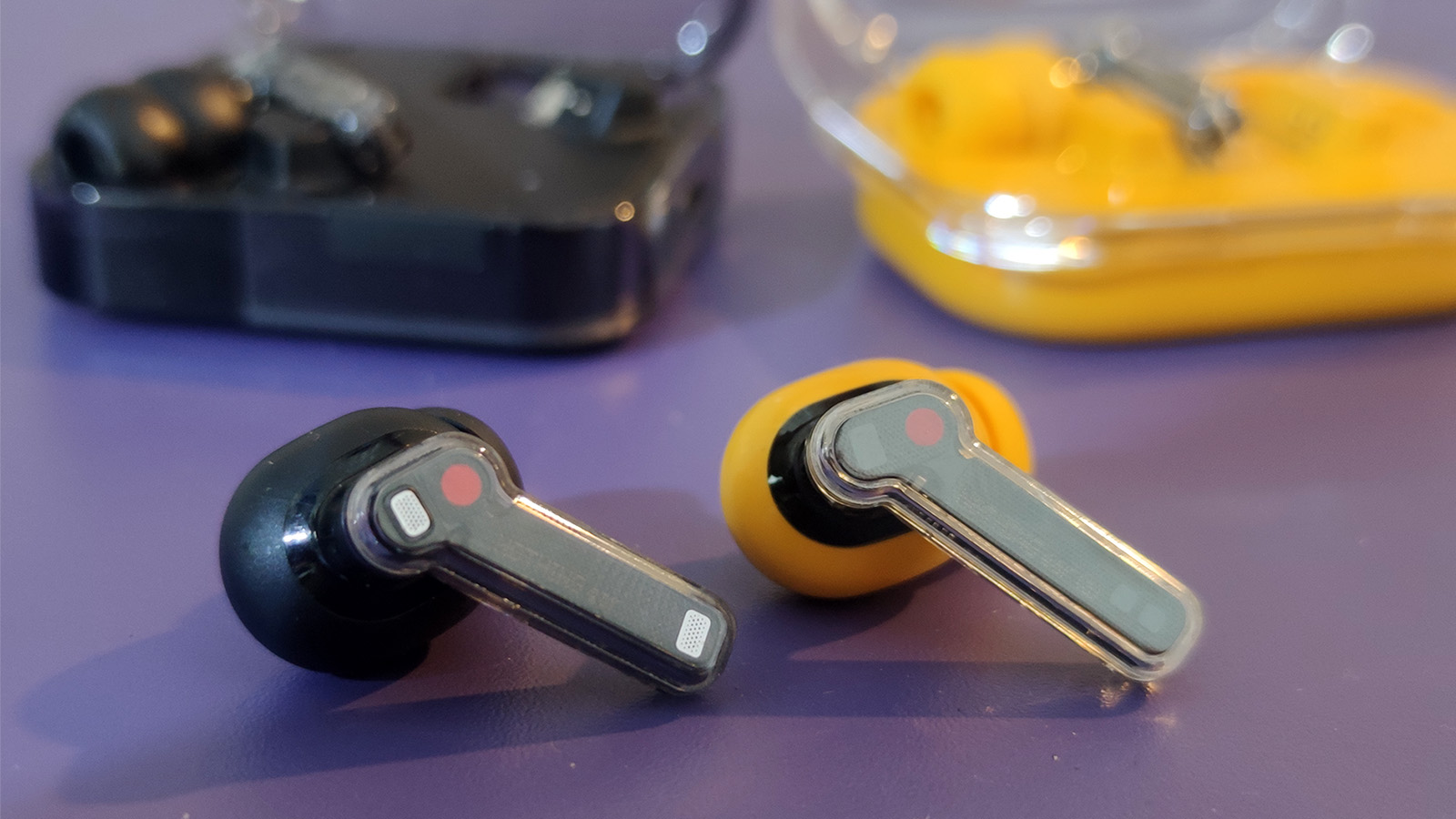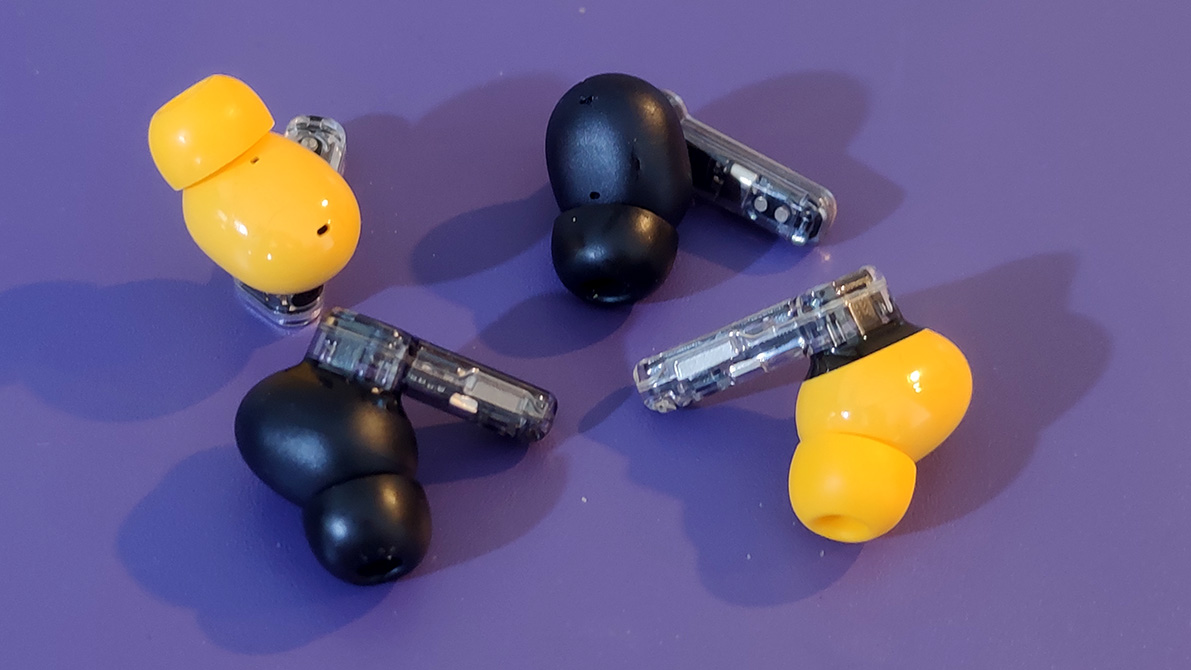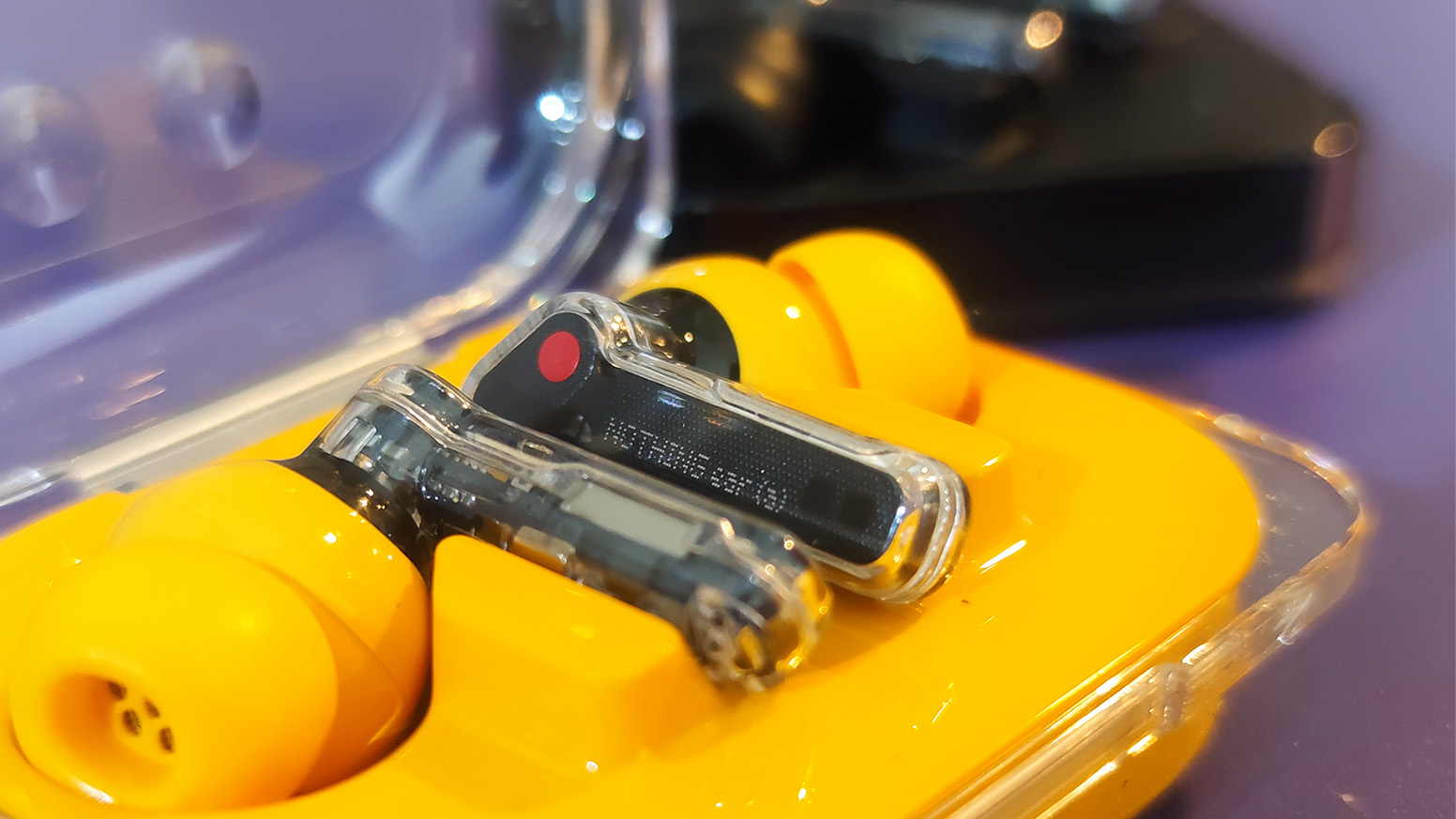Nothing Ear vs Nothing Ear (a): how do Nothing’s 2024 earbuds compare and which should you buy?

Upstart British tech brand Nothing has always specialized in offering tech that won’t break the bank but comes packed to the gills with unique features nonetheless, and it’s now offering its earbuds in cheap and cheaper options in the form of the Nothing Ear and Nothing Ear (a).
The Nothing Ear is actually the third-gen version of Nothing’s flagship series of earbuds – you might as well call them the Nothing Ear (3) since they follow the Nothing Ear (2), but the company has apparently dropped that naming system here. The buds provide some upgrades over their predecessors but are very similar in many ways.
Then there’s the Nothing Ear (a), which are slightly more affordable earbuds. These follow the firm’s push to create more lower-cost options within its gadget arsenal, which we already saw with the Nothing Phone 2a or Nothing Ear (Stick), for instance, but with some features from the top-tier Ear cut alongside the lower price.
Announced together in April 2024, these two sets of earbuds are very similar in a lot of ways, so prospective buyers might not be able to decide which is worth buying. Don’t worry though, I’ve tested both the Nothing Ear and the Nothing Ear (a), and I can help you figure out all the meaningful differences.
Nothing Ear vs Nothing Ear (a) price

Of these two earbuds, the Nothing Ear (a) is the cheaper offering, which you may have been able to tell given that (a) is a frequent suffix in tech to signify a budget alternative. The Nothing Ear (a) will cost you $99 / £99 (roughly AU$190) or even less if you find them in sales.
You’ll be paying a little more for the standard Nothing Ear as they retail for $149 / £129 / AU$249, which is roughly how much their predecessors cost too.
By veering into the triple-digit price territory, the Nothing Ear distinguish themselves as belonging to a slightly different price bracket to their (a) siblings – the Nothing Ear (a) could be considered cheap earbuds, among many rivals jostling for the attention of price-conscious buyers. The pricier buds, not so much, though they’re still very competitive for sound and features at that price level.
Sign up for breaking news, reviews, opinion, top tech deals, and more.
Nothing Ear vs Nothing Ear (a) design

An ocular patdown might not reveal much of a difference between the Nothing Ear and Nothing Ear (a) buds other than the color: the former is black and the latter is yellow (also available in white). But there’s a tiny bit more going on here.
The Nothing Ear (a) are ever so slightly heavier at 4.8g each, which is 0.18g more than their darker counterparts in these images. Will your ear be able to notice this miniscule difference? It’s unlikely.
Both options offer lightweight earbuds that sit snug in your ears, especially if you use the tip test through the app which helps you figure out which in-box ear tips are best suited for you. They’re also both IP54 rated against most fine particles and streams of water.
Bigger changes present themselves under the hood. The Nothing Ear's "premium 11mm ceramic driver" differs from the Nothing Ear (a)'s in that, while still 11mm, the cheaper option's drive unit per bud is listed only as "dynamic". There's also a difference in the cases: the Nothing Ear has a large squircle case which weighs 51.9g, and while it’s not so huge that it won’t fit in your pocket, it’s still larger than the (a)’s. It’s also made of cheap-feeling plastic that groans if you hold it too hard. The Nothing Ear (a) case is a smaller clamshell design that weighs 39.6g – as you can tell from pictures it’s smaller and svelter, and perhaps because of its smaller form the plastic doesn’t feel as nasty.
If you need a durable case, however, the Nothing Ear might be the better option, with its IP55 rating actually exceeding the buds' IP54 rating. The Nothing Ear (a) case is only IPX2 so it won’t survive too much water ingress.
Nothing Ear vs Nothing Ear (a) features

You’ve (hopefully) read this article thus far and noticed very little difference between these two earbuds – but finally we can start comparing them properly, now we’re in the features section.
The Nothing Ear distinguish themselves from the Ear (a) in a few minor ways and one major one; the latter is the excellent sound personalization mode. Basically put, you can conduct a short hearing test and afterwards, the buds will compensate for the nuances in your own hearing to balance music for you. It’s really a game-changing way of enjoying your music better – and I don't say that lightly.
You’ll also find a slightly more advanced equaliser when using the Nothing Ear over the (a), with more options for tweaking your sound if you know what you’re doing with equalisers (if not, this feature is perhaps a little redundant).

All these features are delivered via the Nothing X app, and in most cases it brings feature parity between the two Nothing Ears. It lets you change what the bud touch controls do, change noise cancellation modes, change the audio codec and do a few extra small things.
Talking of noise cancellation, both offer several modes. There’s transparency, which lets you hear background noises so you can stay aware of your surroundings when you’re listening to music, and then three intensities of ‘proper’ ANC which increase the strength of the noise cancellation but drain more power as a result. An adaptive mode changes which ANC you’re using them on the fly to save power.
As far as I could tell, the Nothing Ear and Ear (a) have equal noise cancellation, (aka, very good) so you can’t use this factor to decide which to buy – although the Ear (a) serve it up for less, obviously.
Both buds also have a ChatGPT feature which lets you use the divisive generative AI tool as your virtual assistant instead of, say, Google Assistant. However this only works for people with a Nothing phone.
Nothing Ear vs Nothing Ear (a) battery life

One final difference between the buds segues us into battery life talk: the Nothing Ear (a) charge via USB-C, while the premium model supports wireless charging on top of that. Nice.
The Nothing Ear (a) boast a slightly longer battery life than their siblings; Nothing’s official estimates for it are 5.5 hours of listening with ANC on (9.5 hours with it off) for the buds.
That’s a hair’s breadth higher than the 5.2 hours of the standard Nothing Ear (8.5 hours with ANC off). It’s a small divide all things considered, and neither last very long in the grand scheme of things.
Nothing Ear vs Nothing Ear (a): sound quality
Prepare for a section so short that my editor is going to wonder what they’re paying me for – the Nothing Ear and its affordable cousin both have exactly the same audio chops.
Both support the same audio codecs, offer the same energetic sound, and in my tests don’t quite go as loud as you’d want them to. And both are very good for the price, offering balanced audio with the equaliser giving you lots of leeway to tweak the music to your taste. They also both have a Nothing-designed bass enhancement algorithm which can give you head-shaking low sounds if you’re a fan of bassy music.
For true music lovers, I’d recommend the Nothing Ear purely on the back of its aforementioned sound customization feature, but like-for-like, these two earbuds sound exactly the same. Trust me, I did blind sound tests between them and couldn’t notice a difference.
So, if sound quality is your main decider, you might plump for the cheap and cheerful Nothing Ear (a) because they sound just as good out the box. Then again, that sonic test and auto-adjustment doesn't come in the Ear (a), and that test represents stone cold value for money…
You may also like
- Prefer over-ears? See our roundup of the best noise-cancelling headphones
- And here's our pick of the best noise-cancelling earbuds
- Considering wired? See our selection of the best wired headphones for 2024

Tom Bedford joined TechRadar in early 2019 as a staff writer, and left the team as deputy phones editor in late 2022 to work for entertainment site (and TR sister-site) What To Watch. He continues to contribute on a freelance basis for several sections including phones, audio and fitness.